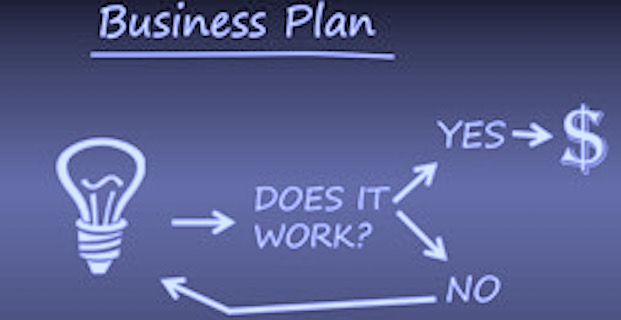by Mark Bloom | Apr 16, 2019 | Small Business Advice
Great Tips from a Content Writer’s Perspective
At Ray Access, we constantly tell our clients and our prospective clients:
“Your website should be making you money,
not costing you money.”

Most businesses, with the exception of ecommerce sites, likely view their website presence as an expense. It’s no wonder:
- Hiring staff (inside your firm or on contract) to manage and update your website can be costly every month.
- Search engine optimization (SEO) and other online marketing efforts also take away from your profits.
- Even hiring a reputable firm like ours to write your weekly blogs may feel prohibitive and too much of a cut on your bottom line.
What’s the point of these expenses if your site isn’t generating any income? You need staff to keep it fresh and SEO services to drive qualified traffic to it. But if none of those visitors are contacting you, you’re paying for eyeballs instead of wallets. You get more leads from your website when it appeals to those who land there. That is, after all, what your website is supposed to do!
Get More Leads from Your Website!
It doesn’t matter how many people view your website if it doesn’t generate any leads for your business from those visitors. And that’s where your site design and content play key roles. A persuasive design and engaging content that connects to your target audience can make the difference in convincing visitors to contact you for your products or services.
“If you’re ignoring your website,
your website is likely ignoring you.”

Websites, like most other marketing strategies, need to be constantly reviewed, tweaked and updated. Keep doing whatever seems to be working. Stop doing whatever’s not working and start doing something new. There are many ways to get more leads from your website, but it takes attention — either yours or someone else’s.
Tips from Professional Content Writers
To get more leads from your website, take heed of three common-sense tips:
- Direct your visitors to the information they’re seeking. This may seem easy at first glance, especially if your target market is singular and very well-defined. But many businesses (like ours) have multiple target markets. Use your website design to provide cues for specific audiences. Make it easy for them to find what they’re looking for, whether it’s information about your pricing, your industry or your business. Put your contact information on every web page. And finally, have the information they need to make a qualified decision available (and visible) on the page. Give them what they need, tell them why it’s important and point them to the solution.
- Make your message feel urgent. People naturally react to things that need immediate attention. Your message has to convey how important it is that your visitors act now. Now! Put time-sensitive material on the page. Explain why it can cost more (in time, consequences or money) if they delay. The more urgency you add to your messaging, the more likely your visitors will act — whether it’s to contact you, fill out a form or download a white paper. Give them a reason to contact you, and they are more likely to.
- Solve problems for your visitors. A classic strategy in marketing is to identify a relatable problem that your target audience is likely experiencing, and then offer to solve it. It’s not a bait-and-switch if you fulfill your promise. At this point, your website isn’t just selling your products and services; it’s helping your potential customers solve a problem.
In the end, to get more leads from your website, you have to give your visitors what they want and expect. If you can do that and make it easy for them to follow through, your website may become a treasure trove of potential customers. That’s the value of an effective website, and persuasive content can make your site effective. Contact Ray Access to jump-start your website.
by Mark Bloom | Apr 9, 2019 | Small Business Advice
The Ways to Market Your Business Are Many

While it sounds like faux advice from a character in a science fiction movie, there is actually a lot of wisdom in “There is no trying; there is only doing.” Especially when it comes to ways to market your business. You can sit down with a marketing guru and plan out your marketing attack. You can write a business plan that looks five years into the future. Ultimately, you have to stop planning and do something.
And when it comes to marketing your small business, all your planning may come to naught. There may be a flaw in your plan or a mistake in its execution. It may not even be your fault. But more marketing misses than hits. That is the honest truth.
Many Ways to Market Your Business
When it comes to ways to market your business, you have hundreds of options, from hiring a high school kid to stand on a street corner with a sign and a funny costume to hiring a firm to produce a commercial for the Super Bowl. It’s all marketing — and yes, advertising is a subset of marketing.
Other examples of marketing that may or may not work for your business include:
- Billboard ads
- Distributed flyers
- Search engine optimization
- Sponsoring events
- Auto wraps
- Pay-per-click online ads
- Contests
- Special sales events
- Blogging
- Radio spots
- Social media
- Giveaways
- Press releases
With so many choices — and there are many more — which do you try? How do you select the strategy that may work best for you? The answer may surprise you.
Lesson #1: There Is No Trying
Remember the title of this blog post: There Is No Trying; There Is Only Doing. No matter where you decide to start, no matter which strategy you decide to begin with, you must give it your best shot. Don’t hold back. If you can afford a billboard ad, ask yourself if you can afford two, in different parts of your city. Make them different and compare the return on investment for each.
Give your initial strategy time to succeed. While paid advertising (online or off) may yield immediate results, some strategies, like blogging or radio spots, may take time to penetrate to your audience. If you’re prepared to pour money into a marketing effort, make sure you have enough reserves to give it the time it needs to succeed.
Lesson #2: There Is Only Doing
But if your strategy isn’t working, stop doing it and move on to the next campaign. This advice may sound contradictory to Lesson #1, but it’s not. Because there are so many ways to market your business, you’d be foolish to pour everything into one option. Especially if it’s not bringing home the bacon.
If your billboard ads have only brought in one or two customers in six months, stop paying for it and put that money into a different marketing effort. If, after six months of promoting your well-written blog posts, no one even likes them, it’s time to try Plan B. Give a campaign time to succeed, but recognize when it’s just not working.
Know When to Do It Yourself … and When You Can’t
Planning your initial marketing campaign is an exciting time for your business. If you know your industry and your market — and how to reach them — then go for it yourself. Plan your strategy, unleash your attack and track the results. If that’s too ambitious for you or you just don’t have the time to devote to it, call in a marketing pro.
The same advice holds true for marketing campaigns that involve writing expertise. If you’re capable and can paint a marketing phrase like a master, go for it. Otherwise, we recommend hiring professional writers like those at Ray Access. We provide the means for marketing your business that have a better chance of succeeding.
Ray Access is a content marketing firm that delivers targeted words to empower your business. Contact us about your specific project to receive a quote or discuss your needs. We write website copy, blog posts, e-newsletters and more. Everything we do is thoroughly researched, professionally edited and guaranteed original.
by Elle Ray | Apr 2, 2019 | Writing
The Best Tips for Beating Writer’s Block
Everyone’s heard of writer’s block. But for writers, just the thought of it can cause clammy hands and a pounding heartbeat. Contrary to popular opinion, it’s not procrastination, fear or laziness that cause your inability to write. In fact, it often seems that the harder you try to write, the worse the block gets.

While writer’s block is a real thing that affects writers of every stripe, it doesn’t have to last long. And it certainly shouldn’t take over your ability to put words on a page. As a writer, you are in control, even if you don’t think you are.
Unleash the Magic!
In point of fact, penning any kind of document — from a novel to a blog post — is one of the most effective ways to overcome the affliction. It may sound antithetical, but once the juices get flowing, the dam opens up of its own accord. Most of time, writing isn’t magical, but in this instance, it can be.
Remember: your final version relies on editing, so the words you write now are only a bridge to that final product. You have to build that bridge with words, but they don’t have to be perfect words. To put it another way: it doesn’t always matter what you write, as long as you do it!
The Big Black Block
Writer’s block is a condition of being unable to think of what to write or how to proceed with writing. That implies that those first few words sometimes are the hardest to write. Without even an idea or a glimmer of a topic, starting any writing project can certainly be difficult.
But even if you have the idea and know where you want it to go, the process may be daunting, especially if you don’t do it all the time. But whether you’re a seasoned writer in the throes of a major block or you’re just trying to get out your weekly blog so you can get back to your real work, you can follow effective tips to ease your burden. And your friends at Ray Access can give you those tips.
Flow, Baby, Flow
These tips are easy and they work. Just ask the thousands of writers who’ve stared down the abyss of writer’s block and found their way to the surface. But like writing, these tips only work if you do them. A block doesn’t often disappear on its own, but it doesn’t have to hold you back from expressing yourself, completing an assignment or creating something you can sell.
You may not need all five of these tips; try them until you find the one that snaps you out of writer’s block syndrome:
- Hypnotize yourself. Hypnosis isn’t mysterious when you consider that all it entails is that you relax and open your mind to suggestion. Your answers lie within, so it’s relatively easy to tap into them when you take a few moments to totally relax and purge all the worry from your mind. Lie down — or even just close your eyes at your desk. Visualize the noise in your head and then watch it leave. Imagine words flowing out of your fingers. Now open your eyes and write.
- Brainstorm. The opposite of self-hypnosis, brainstorming requires that you let thunder and lightning explode in your mind. Jot down every thought that comes up. Start the exercise with a concept or even just one word that you want to include in your current writing assignment. Don’t edit or monitor your ideas as they pop into your head. Before you know it, you’ll have the beginnings of a great piece of writing. This tip works really well with another person too.
- Upend it. When you insist on starting at the beginning of your article, too often you set yourself up for perfectionism, one of the dreaded downfalls of writers everywhere and a major cause of writer’s block. Start a piece with the ending. Or just map out the various sub-topics you want to include. You can always go back and rearrange sections and paragraphs later. Many proficient writers always wait to write the beginning last because it’s the most difficult part of any writing project.
- Talk it out. If you feel paralyzed by writer’s block, start talking about what you hope to accomplish. Naturally, it’s nice when you can speak to another person, who might even offer some helpful insight. But even if you’re alone in your room, saying what you want to write about out loud triggers a part of your brain that creates sentences and turns thoughts into words. To add another layer to this tip, record yourself!
- Just walk away. Sometimes when you’re in the grip of debilitating writer’s block, you may just need a break. You’ve been trying too hard. Step away from your desk. Do some yoga, dance to your favorite tune, take a walk or work your muscles. Once the cobwebs clear, you can kick that writer’s block to the curb!
Ray Access is a content marketing firm that delivers targeted words to empower your business. Contact us about your specific project to receive a quote or discuss your needs. We write website copy, blog posts, e-newsletters and more. Everything we do is thoroughly researched, professionally edited and guaranteed original.
by Elle Ray | Mar 26, 2019 | Small Business Advice
What Are the Pros and Cons of a Home Office?

There’s a lot to be said for going to work everyday in an office that someone else has to pay for. You can simply drop everything, shut it all down and leave it there when the clock strikes quitting time. And the camaraderie of an office setting is hard to replace. In fact, belonging is one of the five pillars of Maslow’s Hierarchy of Needs. Having a place to go to work is why many people go to work at all — to make friends and build social relationships.
According to a 2018 Forbes piece: “Strong social connections make people happier and physically healthier, which can translate into work performance.” This implies that those who work at home have a tendency to work less and even live unhealthy lives of desperation! Could it be true?
We Know Better
Whether you’re a freelance or contract worker — or your corporate boss has offered you remote access and the ability to work at home, you may find that it’s an ideal solution for your lifestyle. Maybe you already have enough friends and need some alone time to keep your sanity. For many who savor their work at home situation, the florescent lights, constant chatter and ringing phones are more of a distraction than a comforting atmosphere in which you can be productive.
As entrepreneurs and writers, the principals of Ray Access spend most of their time in isolation. They gave the office thing consideration, but the accountant said an emphatic “No.” One of the most important benefits for small business owners is the savings that comes with a home office. The tax write-offs are just as astute as if paying for a brick and mortar office space.

Work at Home Benefits to Beat the Band
To those workers who’ve done the work at home bit for a long time, the benefits far outweigh the disadvantages. Many could never return to an office shared with other people. They’re spoiled. In addition to saving a bundle on monthly bills, some of the most outstanding benefits of working from home include:
- Flexibility. Unless your keystrokes are monitored by your boss, you can get up when you want to, have lunch at any time, take a two-hour break and go work out, move your laptop outside, call a friend in the middle of the afternoon and just darn well work whenever you want. As long as you fulfill the tenets of your contract, you set your hours.
- Dress code. There is none! Big savings on wardrobe updates and dry cleaning.
- Family time. Removing a commute from your workday gives you an enormous chunk of time you can spend with your family. You can be there when the kids get home from school and return to work as they settle in. Make dinner for the gang and then work some more in the evening if you need to.
- Health. While some people need the discipline and socialization found in a workplace to be mentally healthy, when you work at home, you have a much better chance of eating more healthfully. It’s just as easy to throw together a salad for lunch than to go out to get a burger and fries. And back to that mid-day or early morning workout: you don’t even have to shower when you get back home. It’s just you in the office!
- Less meeting time. Even if you do have to sign in for the daily office meeting electronically, you can always mute your end and turn up the radio. Entrepreneurs who work at home set meetings at coffee shops on their schedules. Just remember that meeting clients means you have to put on some decent clothes. But at least you can write off the coffee.
Ray Access is a content marketing firm that delivers targeted words to empower your business. Contact us about your specific project to receive a quote or discuss your needs. We write website copy, blog posts, e-newsletters and more. Everything we do is thoroughly researched, professionally edited and guaranteed original.
by Mark Bloom | Mar 19, 2019 | Website Content
Writing Pros Explain What Goes on a Homepage

Putting a website together is hard work when you have to do it all yourself. No matter what platform you use — WordPress, Squarespace, Wix, Weebly, GoDaddy or even HTML — you have to make lots of decisions and somehow trust that it’s all going to work out. If you get any one of factors wrong, it can lead to an ineffective, invisible or just plain awful website.
And arguably the most important page of your site is your homepage. It’s the first page most visitors see and the root of your whole site. So what goes on a homepage? Welcome to a primer on that very topic, presented to you by the professional content providers at Ray Access.
What Does a Homepage Have to Do?
Before getting to what goes on a homepage, let’s explain the role your homepage has to fill. This will go a long way to help you understand the rest of this article. With this in mind, your homepage has to:
- Capture your visitors’ attention
- Introduce your business
- Reinforce that your visitors are in the right place
- Give your visitors something to read, watch and/or do
- Direct your visitors to your interior pages
Ultimately, your homepage has to do everything possible to keep visitors on your site. Assuming a visitor arrives looking for something that your business does, you have about 30 seconds to make your pitch, according to the Nielsen Norman Group. That’s a lot to ask of one web page.
So What Goes on a Homepage?
There are seven things that you absolutely, positively must put on your website homepage to accomplish your goals and keep visitors on your site longer than 30 seconds. Consider:
- Your business name and tagline. Don’t keep visitors guessing where they ended up. Your business name must be front and center. Include a tagline that defines your business or competitive advantage. For example, your tagline may be: “Better than doing it yourself” or “The best resource for doing it yourself.
- Your contact information. Believe it or not, some visitors to your website want to contact you without much prodding. You’re doing them a disservice if you don’t list your hours and contact information (location, phone number and email address) right where they can find it easily. This one of the most frequently missed items of what goes on a homepage.
- An easy-to-follow navigation menu. How you direct your visitors to more information makes a huge difference in how they interact with your site. Keep your menu options clear: Products, Services, FAQs, About, Contact — whatever makes sense for your business. For example, Ray Access has two types of clients: businesses and agencies, so our menu directs each to a separate menu of choices. Above the fold.
- Calls to action. Give your visitors something to do, whether it’s a contact form to fill out or an opportunity to learn more about your business. Make your call-to-action button big and obvious. Give it a distinct color. You can have more than one call-to-action on your homepage, but one should be primary. What do visitors want from your business?
- Effective content. You need to state your case and explain why you’re in business. When it comes to what goes on a homepage, this is the essence. The content on your homepage has to give your pitch:
- Your primary market or audience — who are you selling to?
- The problem you solve for your customers — what benefits do your customers get from you?
- Your competitive advantage — why should visitors buy from you?
- Several testimonials or social proof — who else has bought from you?
- Compelling reasons to dig deeper — why should visitors click to your interior pages?
- Arresting media. Capture your visitors’ attention. If you have a video explaining your business or your competitive advantage, put it on your homepage. Use interesting, unusual or vibrant images on the page. Stock images get old fast. Everything on your homepage needs to relate to the issues you can solve for your visitors.
- SEO keywords. Part of what goes on a website is what helps bring people to it. That’s where search engine optimization (SEO) keywords come in. Ray Access believes in one percent keyword density — that’s one keyword for every 100 words — which works without hitting visitors over the head again and again, because no one likes that.
Now that you know what goes on a homepage, go ahead and create your awesome website. But if you need help with effective content, Ray Access has for professional writers and editors who do it right for you.
Ray Access is a content marketing firm that delivers targeted words to empower your business. Contact us about your specific project to receive a quote or discuss your needs. We write website copy, blog posts, e-newsletters and more. Everything we do is thoroughly researched, professionally edited and guaranteed original.
by Elle Ray | Mar 12, 2019 | Writing
After Hunkering Down for Winter, Get Inspired!

Just as big bears come out of hibernation in the spring, so too can writers take advantage of some writing tips based on the re-awakening that occurs in the blossoming season. Stretch your joints … and your imagination. Pick the daffodils that bloom first in spring and set them on your desk to encourage bright new ideas.
Whether you’re writing your weekly business blog, updating your website with fresh copy or journaling to keep the creative juices flowing, you can benefit from spring writing tips that take you out of the doldrums of winter and into a new season filled with possibilities — including new ways to increase sales with innovative marketing copy.
Why Write in the First Place?
You may be one of the forward-thinking business owners who’s incorporated writing tips from the pros, like those at Ray Access, or left the writing to those very same professionals. But even if you’re not the author of your marvelous weekly blogs, you can benefit from spring writing tips.
Whether you just want to add a snippet to your daily Tweet or post a Facebook meme designed to bring in new business, you need fresh ideas that always include words. (Search engine algorithms, after all, can’t see graphics.) And even if you have your monthly newsletter written professionally, there’s nothing stopping you from a sending a personal email to your loyal customers on a regular basis.
Deep Patel, author of A Paperboy’s Fable: The 11 Principles of Success, writes in Entrepreneur that “a clever and inventive mind opens doors to success.” And creativity is tantamount to innovation. Writing in a journal every day is one of the easiest ways to open pathways of creativity that may actually illuminate other areas of your mind to construct better products and services within your own specialty realm.
10 Spring Writing Tips to Get You Started
So here’s what you need to know to get started. You don’t need to pen a novel or even let anyone else read your writing for it to effectively jump-start your left brain creative process. Just try some of these 10 tips:
- Let it go and let it flow. Release all preconceived notions of what you think is good writing. Be like the Nike pronouncement and just do it. Try a little self-hypnosis and don’t even read as you let words flow onto the page. You always can edit later.
- Reserve judgment. Put the critic aside. These writing tips also stress expelling the word “should” from your vocabulary. So quit “shoulding” on yourself. “Should” has no place in the creative process.
- Look at art. While your mother-inspired judgment is turned off, look at a piece of art or visit an art museum. Allow some creativity to come in through your eyes.
- Visit Mother Nature. She has no judgment. Walk through the woods, stroll on the beach or just sit in your yard taking in the sounds, sights and smells of the ultimate creator. This is an especially powerful exercise for springtime writing that may have gotten all stuffy and closed staying indoors all winter.
- Listen for a note. Music and the lyrics bound together within chords carry so many layers of inspiration that it can be difficult to sort through it all. So don’t. Just let the music stir your soul and then turn to your pen or keyboard and allow the flow to ease through your fingertips.
- Work out. Some of your sleepiness and foggy thoughts get expelled through your sweat when you exercise rigorously. Whether you’re a runner or like to follow a particularly rambunctious dance instructor, get sweating. Physical attention takes your mind off mental obsession to make way for new ideas.
- Read. One creed that all writers live by is “writers read.” Pick up a new genre that you don’t normally read, like a national magazine or a science fiction novel. Just seeing words in new places jogs loose your own unsaid words.
- Change your scenery. Just like a vacation in an exotic locale refreshes your mind and body, writing in a new place can refresh your creative spirit. Take your laptop to a coffee shop if you normally write at home. Or rent a room with a view in a mountaintop motel for a fresh splash of inspired writing.
- Brainstorm. Brainstorming — just letting ideas flow — is another one of those writing tips that needs to be done with no judgment. Even if the words seem disparate and irrelevant to your goal, let them flow. When you go back and read them, you may be surprised at what came out during the session.
- Clean your room. This isn’t mother talking. Instead, it’s the wise Chinese masters of feng shui who say that a cluttered desk is a sign of a cluttered mind. Straighten up your writing area so that it’s orderly and clean. Creative energy prefers to land in a place that shines with good intentions and deliberate invitations.
Ray Access is a content marketing firm that delivers targeted words to empower your business. Contact us about your specific project to receive a quote or discuss your needs. We write website copy, blog posts, e-newsletters and more. Everything we do is thoroughly researched, professionally edited and guaranteed original.
by Mark Bloom | Mar 5, 2019 | Small Business Advice
Make Your Site More Effective for Your Business

Every business wants a successful website. Every successful website draws people in, encourages contact and generates leads. In other words, every website is a potential source of new customers, an opportunity for you to make your pitch and a chance to educate your customers.
A poor website isn’t just a missed opportunity, it actually can hurt your business, since potential customers can click away to find your competition. Don’t let that happen to you. A great website is another tool in your marketing toolbox. It’s one more way to connect to your target audience.
Ray Access, with experience researching and crafting highly effective websites, has put together a list of five ways you can improve your website. And these are things you can do as soon as today.
1. Assess Your Website
To improve your website, you first have to know what works and what doesn’t. That’s just common sense. To move forward, you first have to know where you are. You can hire consultants to come in to do a months-long study of your site. They’ll track page hits and how long visitors spend on each page. It will likely cost you thousands of dollars to point out things you may already know, or at least suspect.
Or you can hire Ray Access to do a website assessment. An assessment is a page-by-page review of your site from a visitor’s point of view. In other words, it inspects the user experience (UX) of your site. The report includes design, content, usability, navigation and presentation. What works? What’s missing? What can make it better? It’s all in a website assessment.
2. Upgrade the Technology
According to Forbes Magazine, your site needs to be fast, safe and mobile-friendly. All three factors are vitally important to ranking your website high and providing a positive user experience. You may need help accomplishing these goals, but they will make a difference in how your site is perceived.
Since the internet is all technology, improve your website by upgrading the technology. To the point:
- Speed helps your website load faster. Making anyone wait for your site to load is essentially putting up a wall between your site and your visitors. Speeding up your site encourages visitors to stay.
- Safety has become a primary issue, especially if you’re taking credit card or other personal information. At the very least, your site should have secure sockets layer (SSL) enabled.
- Mobile-friendly sites don’t just render more seamlessly on smaller connected devices, but they rank better in Google searches. Don’t fall behind the curve; improve your website by making sure it’s mobile-friendly.
3. Add Testimonials
With the advent of pay-per-click campaigns, there have been many studies on what makes a successful landing page — the page the ad sends you to. It doesn’t have to be your home page. In fact, it’s better if it’s a targeted page made especially for that ad. And one of the most successful components of good landing pages is “social proof.”
Social proof is basically testimonials on the page from previous customers. But they must be believable, and the best way to ensure believability is to put a real name, a real quote and a real photo of your customers on your website. Visitors like to see that others have used your products or services to do what they need. It’s a powerful tool to improve your website’s marketing power.
4. Start a Blog
A blog gives you a weekly opportunity to educate your customers and potential customers about your industry, your business, about you or about almost anything that relates. You can even tap into current events as a way to lure visitors to your site. Your blog is a marketing tool to capture more views and more viewers.
A blog also has the advantage of adding volume to your website. More and more articles related to what you do, how you do it and why you’re the best add up to more persuasive content for creating leads and generating more business. And the content in your blog posts can be reused a number of ways:
- In advertisements
- In newsletters
- In marketing collateral
- In press releases
5. Update Your Messaging
Regardless what kind of search engine optimization (SEO) you’re running — or the volume of social media campaigns, every interaction with your audience should encourage them to click through to your website. It’s your website’s job to convert visitors into customers. It’s up to your website messaging to win over new fans.
If your site is getting lots of traffic, but few sales, improve your website by changing your messaging. Maybe you need more persuasive content. Maybe you should revise your pitch. Maybe the language on your site doesn’t connect with your potential customers. Maybe you need more calls to action to give your visitors a direction. Whatever you need, call on Ray Access to deliver expert content for you.
Ray Access is a content marketing firm that delivers targeted words to empower your business. Contact us about your specific project to receive a quote or discuss your needs. We write website copy, blog posts, e-newsletters and more. Everything we do is thoroughly researched, professionally edited and guaranteed original.
by Elle Ray | Feb 25, 2019 | Small Business Advice
Getting a Degree Is the Million-Dollar Question

Some of the world’s most successful business people never had a small business degree (or any college degree) when they first started out. Bill Gates stands as a classic example. He’s often touted as the world’s most successful college dropout. Also consider Rachel Ray, Russell Simmons, Michael Dell and Mark Zuckerburg. They all belong to the illustrious crowd of “uneducated” superstars.
And yet, so many budding entrepreneurs hesitate to take the plunge because they feel the need to get a small business degree. They look to higher education to teach them about:
- Accounting, so they can do their own books
- Advertising, to learn how to sell their products and services
- Web development, so they can build their own websites
- Contract law, so they don’t get taken
- Marketing, to learn how to research competitors and identify a niche
- Human resources, so they can hire, train and manage a staff
- Management, to be able to manage said staff
- Leadership, so they can guide their venture
- Writing, so they can create their own proprietary copy
Pick Your Poison
Sure, there are plenty of institutions ready to take your money and give you that small business degree before you ever even earn a nickel in profits. A recent Google search for “small business degrees” turned up 443 million hits. And each has developed its own pitch as to how they’ll make you a better entrepreneur.
In 2019, however, it’s not the sheepskin hanging on the wall that impresses customers. It’s the quality of your products and services. It’s not how savvy your ads are that bring in the business. It’s how passionate you are about your brand. And clients don’t really care if you’re a Quickbooks pro or rely on a handwritten ledger to keep track of your money; they just care about getting a good deal.
The Entrepreneur Defined

A small business degree doesn’t make you a bona fide entrepreneur. While a doctor is defined by credentials, an entrepreneur, as defined by Dictionary.com is: “a person who organizes and manages any enterprise, especially a business, usually with considerable initiative and risk.”
Some say that entrepreneurs are born, not made. Did you have a lemonade stand or cut the neighbor’s grass as a kid? Did you arrange for a band at your high school graduation or champion great photos for the yearbook? Have you ever sold candy to go to camp or figured out how to get a bigger allowance from your parents? If you answered yes to any of those questions, chances are you have entrepreneurial blood running through your veins.
Find a Need and Fill It
Entrepreneurs just do it. Even the founder of Nike that made the slogan famous didn’t have a small business degree. He was a track and field coach looking for better shoes for his runners. The important traits and skills needed by successful entrepreneurs can’t be taught in a classroom. Not even in virtual classrooms.
No small business degree can provide you with energy and optimism you need either. Entrepreneurs tap that well from deep within. They watch other successful startup pioneers. They learn from trial and error. For all those other tasks — you can hire someone to do them.
Ray Access is a content marketing firm that delivers targeted words to empower your business. Contact us about your specific project to receive a quote or discuss your needs. We write website copy, blog posts, e-newsletters and more. Everything we do is thoroughly researched, professionally edited and guaranteed original.
by Mark Bloom | Feb 19, 2019 | Agency Advice
Business Websites Require Specialized Services
Today’s website developers do amazing work. They often design, build and support their clients’ websites — as well as train clients on how to maintain their own sites — all while trying to hit a moving target. The internet keep changing, tastes keep evolving and business clients have become notoriously difficult to please.
So it’s no surprise that successful web developers either hire specialists or contract out specific work. No one can do it all by himself anymore. The types of specialties required include:
- Website design
- User experience (UX)
- Graphic design
- Website content
- Search engine optimization

Website Developer as Project Manager
As a result of this specialization, website developers — even well-connected, highly skilled web developers — often find themselves becoming project managers. Even if they still do the coding, they have to manage others to do the rest. Industry changes have been forced on developers because clients are demanding those services along with the actual website.
And it’s become a successful business model. Many website developers are becoming freelancers themselves, sticking with the work they love and hiring out to do project work. Others have seen the writing on the wall and established agencies that can do it all, even if the website developer can’t do it by himself. There are many examples of this either/or business case playing out across the globe.
Digital Agencies Are Flourishing
If you need a web designer, you can find hundreds online. The same is true of every other specialty, including website content providers. Niche professionals exist, and the smart ones are aligning themselves to form digital agencies. They may have never met in person, yet they can work together to satisfy demanding clients.
It’s a new business model for a new millennium. Digital businesses have an address, but it may be the owner’s home address, a P.O. box or a co-working space. Experts come together through online apps like Skype or Basecamp, where conference calls are pulled together from around the country and project tasks are laid out for all to see. It’s exciting and challenging. But it’s working.
Ray Access as a Business Partner
At Ray Access, we’ve seen the changes too. We align our team with website designers, web developers, SEO firms and UX professionals to offer website content, blog posts, press releases and more. When we deliver to the client or to the agency — since we’ve done both — we become an arm of the agency we work for or through.
Ray Access is a specialist for online content. But we don’t offer web development services or graphic design or SEO. We have allied partners for that. And when we work through a website developer, we make that agency seem like they’re the experts in website content, even though we’re doing all the work.
Find Your Digital Partner
So if you’re a website developer, SEO firm, web designer or UX pro, find others you trust to do the work you can’t or don’t want to do. Develop a partnership, so that no matter which one of you brings in the client, you all get some work to do, each to his own specialty. Everyone wins in this scenario, especially the client, who gets the best of all worlds!
Ray Access is still actively seeking partners for web developer, SEO and design services. If that’s you, contact us and let us know what you do and what you’re looking for. Together, we can all astound our clients and deliver functional websites that streak to the top of the search results. And isn’t that the point of our efforts?
Ray Access is a content marketing firm that delivers targeted words to empower your business. Contact us about your specific project to receive a quote or discuss your needs. We write website copy, blog posts, e-newsletters and more. Everything we do is thoroughly researched, professionally edited and guaranteed original.
by Mark Bloom | Feb 12, 2019 | Agency Advice
Get Ahead of the Curve with this Website Tip
Websites continue to change, but what will be the website trend in 2019? Website content? Blog posts? Nope.

This deer knows the website trend in 2019.
Over the years, as the internet itself has evolved, websites have served a variety of purposes. But regardless what your website is supposed to do, every effective site shares several characteristics:
- Inviting design, which uses text, graphics, colors and styles, as well as effects to entice visitors to stay on the site
- Ease of navigation, which makes navigation on the site intuitive, so even new visitors can find their way around and get to the information they’re seeking
- Load speed, which determines how quickly your pages load in a visitor’s internet browser and device
Which Is the Website Trend in 2019?
Ray Access doesn’t employ website designers, so we can’t speak to how designs are changing online, except to note that new designs are breaking down the boxed-in framework. If you want to learn more, go here.
Navigation hasn’t changed that much. Menus are listed at the top of the page, along the side of the page or collapsed into a so-called “hamburger” — three short horizontal lines, stacked one on top of another. Click the hamburger to open the menu. Your navigation choice is part of your site’s style, but it has to be consistent across your site.
Load speed is one area that has been evolving quickly and has made a huge difference in the effectiveness of websites. There are many factors that affect your load speed, and we’re predicting that improving your site’s speed is going to be the biggest website trend in 2019.
Why Page Load Time Is Important
How fast your website loads directly relates to its success. According to Unbounce.com, nearly three-quarters of consumers admit that a slow page speed stops them from buying something. The prevailing attitude is summed up in this quote by Andy Crestodina of Orbit Media:
“Web pages don’t have loading bars. So when the page is slow, the visitor doesn’t know if the delay will be another 500 milliseconds or 15 seconds. Maybe it will never load. And the back button is right there.”
Additionally, Google recommends that your site load in five seconds or faster at a standard connection. So if you have a slow site, the search engine giant may penalize you. While Google’s algorithms are secret, it’s no secret that they want to deliver positive experiences for their users, and they consider slow load speed a poor user experience.
Factors Influencing Your Site’s Load Time
You may think connection speed is the determining factor for how fast your site loads, but that’s incorrect. If you’re browsing the internet on your 3G cell phone, every site loads at about the same rate, relatively speaking. It’s other factors that can influence the relative website speeds.
So the website trend in 2019 is to make your site load as quickly as possible. Factors that influence how fast your site loads include:
- The image sizes on your site
- The complexity of your site’s code
- The number of operations going on in the background
- Your website host’s capabilities
How to Improve Your Website Speed
You have some control over the factors that slow down your website. A little background work can do wonders for your load time. For example:
- Resize all your images so that they’re no bigger than the size they’ll be displayed on your website. Then upload them again to your site, using the same filename. The goal is to make the file sizes as small as possible.
- Use mobile-friendly templates for your website and clean, concise code. Ask a programmer for help if you need it. Getting your pages to load quickly is the top website trend in 2019, and totally worth the expense. Slow sites lose visitors, engagement and sales.
- Make sure you don’t have clunky plugins or other apps running in the background when a visitor comes to your site. Your pages will load faster without all that competition for bandwidth.
- Pay what it takes for a website host that can handle all the traffic you’re going to get. It’s about computing power on your host’s end and (again) competition for the bandwidth coming into your website. One recommended host that can handle this website trend in 2019 is HostPapa.
Ray Access is a content marketing firm that delivers targeted words to empower your business. Contact us about your specific project to receive a quote or discuss your needs. We write website copy, blog posts, e-newsletters and more. Everything we do is thoroughly researched, professionally edited and guaranteed original.













